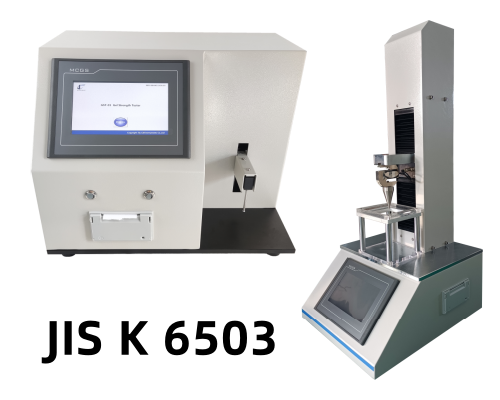
Introduction to JIS K 6503
For professionals in the food, pharmaceutical, and gelatin manufacturing industries, precise texture evaluation is critical to product quality. The Japanese Industrial Standard JIS K 6503 offers comprehensive guidelines for testing animal glues and gelatins, particularly focusing on jelly strength—also referred to as کھلنے کی طاقت. Understanding and applying this standard correctly can significantly enhance quality assurance processes and regulatory compliance.
What JIS K 6503 Covers
JIS K 6503 defines methods for evaluating the physical characteristics of gelatin and animal glue, specifically emphasizing jelly strength. This property is a critical parameter, representing the gel’s resistance to deformation under standardized conditions. The standard provides detailed instructions for test setup, including equipment specifications and operating procedures, ensuring consistency and repeatability across laboratories.
Essential Equipment for Jelly Sterngth Testing
According to Section 5.4.1 of JIS K 6503, the following apparatus is required:
- Texture analyzer or gel strength tester, capable of detecting force to at least one-digit accuracy (e.g., 1g).
- Cylindrical probe: 12.7 mm in diameter with a perpendicular base.
- Glass jelly cup with a matching rubber plug.
- Thermostatic bath: Accurate to 10.0°C ± 0.1°C.
Gelstrength.com’s GST-01 جیل طاقت ٹیسٹر meets and exceeds these requirements with high precision, programmable settings, and user-friendly operation. Its compatibility with cylindrical probes and strict control over speed and displacement ensures full alignment with JIS K 6503.
Step-by-Step Jelly Strength Testing Procedure
To conduct the jelly strength test effectively, follow the procedure outlined in Section 5.4.3 of the standard:
- Prepare the test solution as per JIS K 6503 section 5.3.2.
- Cool the gelatin to approximately 35°C at room temperature after heating.
- Place the cup in a thermostatic bath at 10.0°C ± 0.1°C for 17 ± 1 hours.
- Configure the measuring instrument to 4 mm plunge distance and 1 mm/s rate.
- Remove the rubber plug, position the jelly cup under the probe, and begin testing with a 10 mm gap between probe and gel surface.
- Record the stress value (g) shown on the display—this is your jelly strength.
Why Choose GST-01 for Bloom Strength Testing?
Gelstrength.com’s GST-01 Gel Strength Tester is engineered for accurate, repeatable, and efficient jelly strength testing. Features that make it ideal for gel strength applications include:
- Precision control of speed and displacement (0.01 mm resolution)
- Customizable programs for varying gelatin and glue types
- Advanced safety features and overload protection
- Real-time data output and optional RS232 integration
- Support for multiple texture analyses beyond jelly strength
With its compliance and flexibility, GST-01 enables quality teams to streamline testing while meeting international standards.

